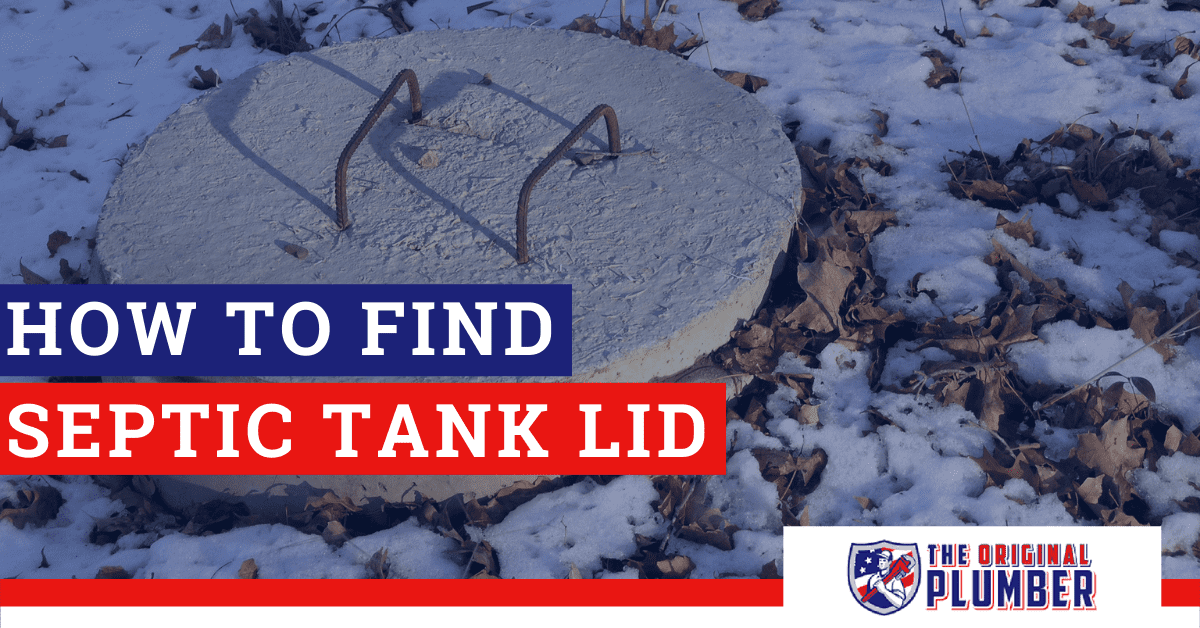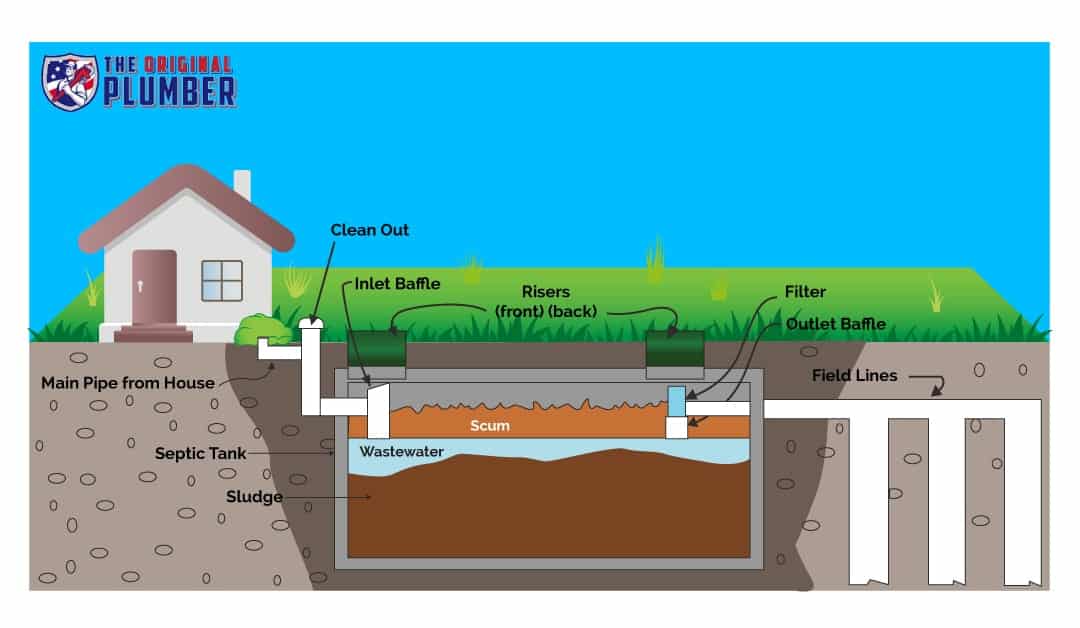Problems with a septic tank can come in many shapes and sizes, and knowing how to find a septic tank lid can save you some frustration. Upon finding your cover, you can diagnose a handful of septic tank problems or simply keep tabs on its location for future reference.
Finding the septic tank cover isn’t difficult either; we’re going to go over step by step how you should locate your septic tank lid, the different types of lids you should be looking out for, and how to properly care for your tank, and it’s cover after you’ve found it.
How to Find a Septic Tank
The first step in figuring out how to find a septic tank is to consult any building plans or blueprints for your home. If you don’t have these on hand, your county building department should have a record of your property’s layout.
Your septic tank will be on that diagram, but if you’re unable to obtain it, there’s another way to find out how to find your septic tank lids.
The Sewer Line
If you’re not using a diagram, you’ll need to locate your sewer line. To do this you might need to access a crawl space or two to locate the line. Your tank is legally required to be a minimum of five feet away from your home but is often ten to fifteen feet away—mark where your sewer pipe is above ground and walk in a straight line away from it. Testing the ground every few feet to try to find the tank’s lid.
Metal Detecting and Ground Testing
Searching for a septic tank with a metal detector is the safest option to find your septic tank. Most septic tanks are made of metal so a metal detector is an excellent way to find your septic tank. If necessary, you can also knock a metal pole into the ground every few feet. If you’re using this method, you’re going to be searching for resistance. Once you find resistance you’ve found your septic system.
Once you’ve found your tank, you’ll likely need to dig to locate your septic tank lid. Your lid could be anywhere from four inches to four feet in the ground, with an average being a depth of one foot. A septic tank lid is usually round and about two feet wide.
Find The Vent
Another way to figure out how to locate your septic tank opening is by searching for a vent. Some septic tanks have small pipes that come out of the ground to help vent the septic system.
Look for Concealment Systems
These pipes can be concealed by things like ornamental rocks or shrubbery, but they can tell you for sure where the septic tank is. Using this method to locate your septic tank can cut down on the time it takes to locate it. Without a vent, some septic tanks can have pressure issues, so finding the vent is a valid way to locate the tank, and in turn, how to locate a septic lid.
Septic Tank Location and Vents
Sometimes this vent is not in the actual tank but along the sewer system. Regardless, locating this vent is a great way to at least locate the sewer line outside of your residence if you’re having a difficult time finding it. Finding this vent, if it’s available, will at the minimum point you in the right direction and help you locate your septic tank.
Different Types of Lids
There are a few different types of septic tank lids, but two of them are going to be the most commonly available. One of these lids is far easier to remove than the other which may require special equipment.
Two Kinds of Lids
The first kind of lid you’ll encounter is plastic, and these types of lids are usually green or black. The plastic lids aren’t as heavy as the second kind of lids and will be a little easier to remove. The second type of lid is a concrete lid. These kinds of lids are usually difficult, if not impossible, to remove without machinery.
Older Septic Tank’s Lids
In less populated areas we’ve found that occasionally septic tanks aren’t made to code, and sometimes the lid you’ll find to your septic tank system isn’t up to code either. If you live in a rural area and you have older septic tanks your entire septic tank will need to be replaced.
Removing a Septic Tank Lid
You should never remove a septic tank’s lid yourself, an open septic tank is dangerous. Septic tanks fill with your waste and drain at a slow pace. Most septic tanks are full of dangerous fumes that can seriously harm your health, and if you fall in, could quickly endanger your life. If you have any difficulties with your septic tank or your septic tank cover, your safest option is to give us a call.
Taking Care of Your Lid
Once you’ve located your septic tank and its lid, it’s a wise choice to take good care of it. Keep the grass around it mowed, and consider placing a small flower bed or ornamental rocks on top of it. By placing a small ornamental fixture on top of your septic system, you note where it is while ensuring that people will stay off of your tank.
Non-Permanent Fixtures
If you don’t want to place a permanent fixture such as rocks on your septic tank, at least consider using a flag or another kind of marker to indicate where it is. These measures will ensure you can always locate the tank again while also keeping people from driving onto or parking on your tank.
Dangers of Unmarked Septic Tanks
If you don’t mark where your tank is, then at least take its location into account when you do septic tank maintenance or when you’re moving a vehicle. Driving over or parking onto a septic tank can ruin the tank, and depending on the durability of your septic tank, could even cause vehicular damage.
Call The Original Plumber & Septic today for a free consultation. We’re available 7 days a week to help with all of your septic and plumbing needs for your home or business. One of our friendly and professional team members will be able to answer your questions. We offer a wide range of services for septic systems, including septic tank pumping.






